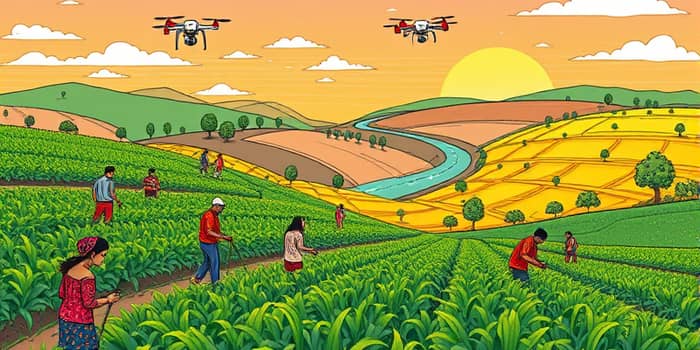
The world stands at a crossroads, confronted by an unprecedented food security crisis that threatens the health and dignity of millions. In 2024, 295.3 million people across 53 countries faced acute hunger, marking a tripling of acute hunger cases since 2016 and a doubling of hunger cases since 2020. This is not a distant issue but a palpable emergency unfolding in every region, where families endure chronic malnutrition, stunted growth, and unending uncertainty.
Behind these numbers are mothers struggling to feed their children, farmers watching their harvests wither under extreme weather, and communities displaced by conflict. Every statistic represents a human life under siege, and complacency is no longer an option. We must act now with decisive investments, innovative policies, and unwavering solidarity to reclaim hope and build a future free from hunger.
The severity of the crisis cannot be overstated. Between 638 and 720 million people—8.8 percent of the global population—faced hunger in 2024. Adding to the alarm, the number of people suffering catastrophic famine conditions more than doubled from 2023, with 770,000 individuals teetering on the brink of starvation in regions like Sudan, Gaza, South Sudan, Haiti, and Mali.
Communities in these zones endure not only the absence of food but the collapse of local markets, the erosion of traditional livelihoods, and the trauma of displacement. In Sudan and Gaza alone, the IPC confirmed famine, underscoring how conflict and crisis can spiral into humanitarian nightmares in mere months.
Multiple factors intertwine to produce widespread hunger. From violent conflict to economic shocks, each driver magnifies the others, creating a relentless storm of deprivation.
Each of these forces demands targeted interventions. Conflict resolution, climate adaptation, price stabilization measures, and financial resilience programs must be deployed in concert to shield the most vulnerable from sliding further into hunger.
As the need for assistance soars, humanitarian funding plummets. In 2025, allocations to food sectors in crisis-affected areas could fall by as much as 45 percent. By October 2025, only US$10.5 billion of the US$29 billion required had been received—a critical funding gap of 64%. This shortfall directly threatens the survival of millions, stretching aid agencies beyond breaking point.
Cuts in official development assistance, especially the cessation of major funding from traditional donors, deepen this crisis. Without urgent replenishment, emergency feeding programs will falter, nutrition services will collapse, and the window to prevent further catastrophe will close.
In a world of chronic hunger, it is staggering that a third of all food produced is lost or wasted. This fundamental disconnect between food availability and food security highlights the inefficiencies of global supply chains and the lack of coordinated action to reduce waste at every stage from farm to plate.
Simultaneously, malnutrition manifests in two extremes: undernourishment and obesity. The 2025 Child Nutrition Report shows rising childhood overweight alongside persistent undernutrition, underscoring how unhealthy food environments can drive multiple forms of malnutrition within the same community.
Addressing this crisis demands a holistic approach combining policy, technology, and financing. Governments, NGOs, and the private sector must collaborate to implement solutions that yield both immediate relief and long-term resilience.
These strategies, when synchronized, can accelerate progress toward sustainable food systems, ensuring that every dollar invested multiplies its impact across communities.
International institutions are already mobilizing significant programs to bolster resilience and increase food security. Coordination among donor countries, multilateral banks, and regional organizations is essential to scale these efforts and fill critical gaps.
While these investments mark significant progress, they represent just a fraction of what is needed. Only through deepened partnerships and sustained commitments can we ensure that every program translates into real gains on the ground.
To end hunger by 2030, we must transform food systems for good. This means aligning national strategies with the SDG targets for zero hunger, integrating resilient trade policies, and prioritizing nutritious diets for all. The UN Pact for the Future offers a renewed framework for global action, urging nations to build more resilient, inclusive, and sustainable pathways out of crisis.
Every stakeholder—governments, businesses, civil society, and individuals—has a role to play. We can reduce food waste, support smallholder farmers, advocate for fair trade, and invest in innovations that drive productivity and equity. Our collective resolve will determine whether this is a moment of despair or the turning point toward hope.
The choice is ours: to stand by as the hungry go unfed, or to invest today in a future where every person has access to safe, sufficient, and nutritious food. Let us seize this imperative and work together to restore dignity, opportunity, and abundance to communities around the world.
References





